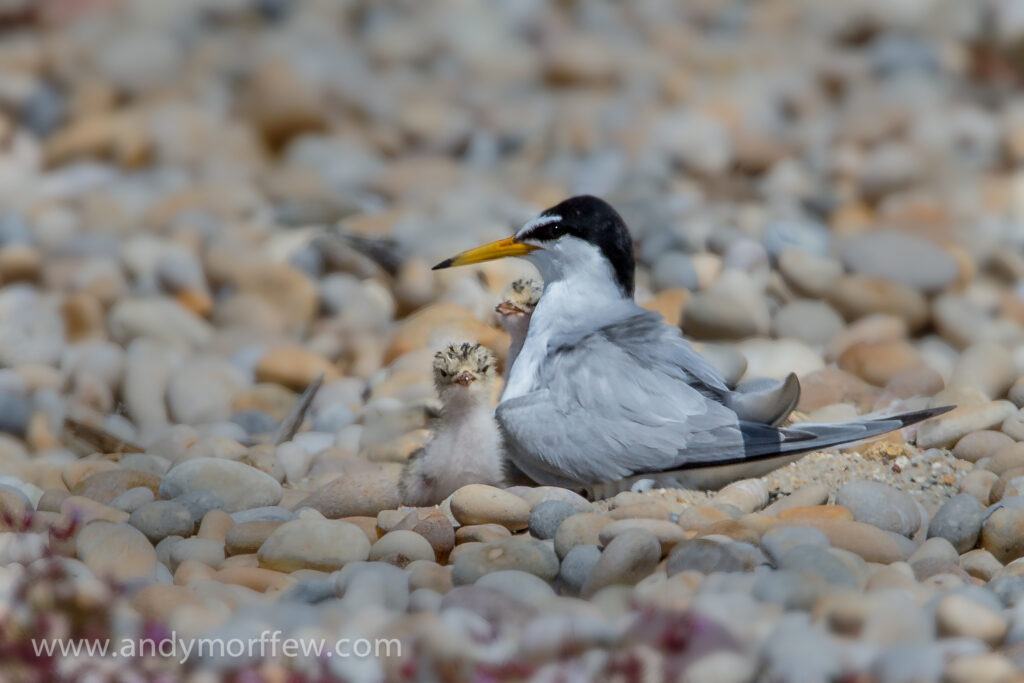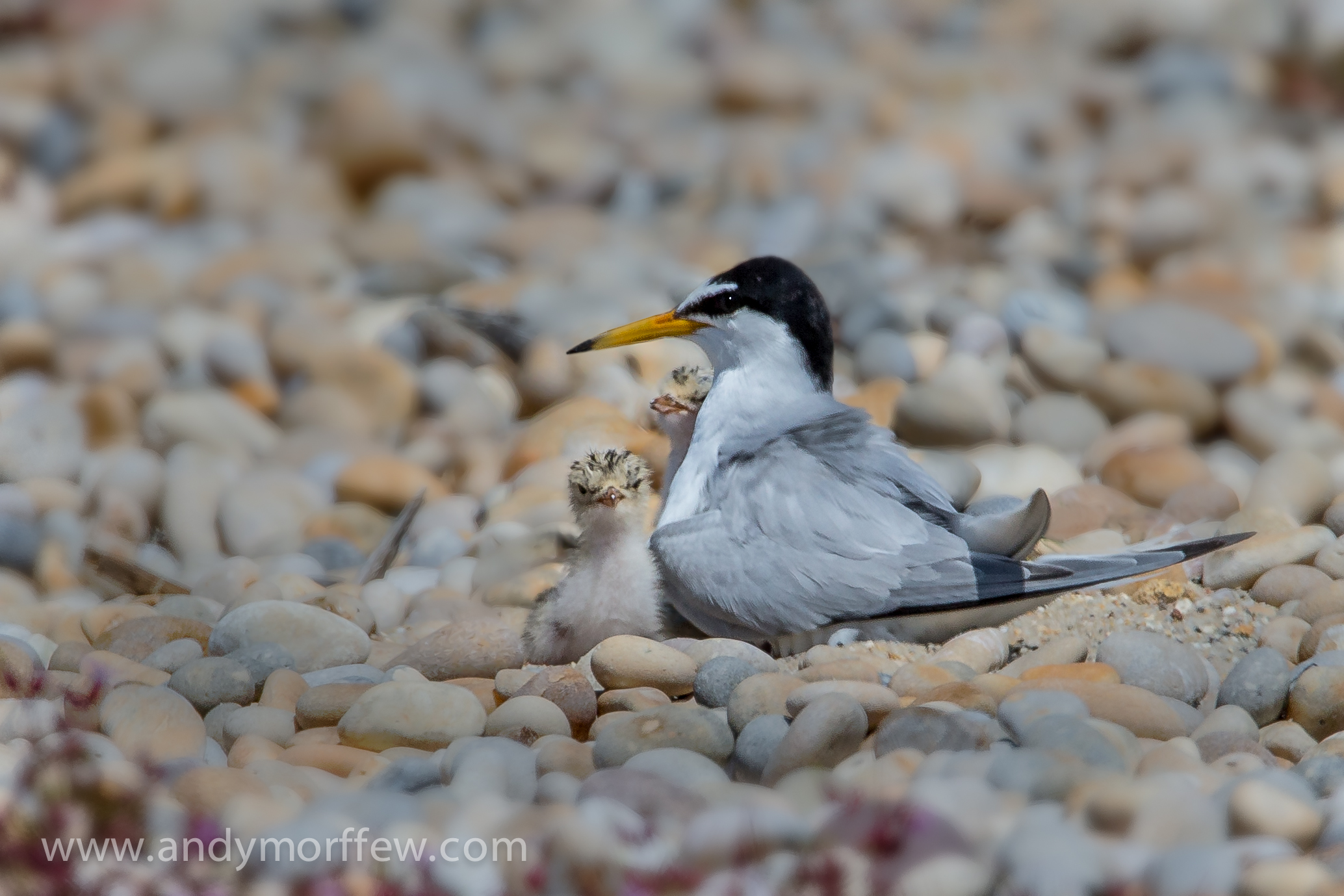Chesil Beach, an 18-mile long shingle beach in Dorset, is the most south-westerly breeding ground for the threatened Little Tern. Helen Booker and Don Moxom describe the pressures that face the Little Tern, and the measures put in place by a dedicated team to help alleviate these pressures at Chesil Beach.
Little Terns Sternula albifrons, one of the UK’s most threatened seabirds, arrive on our shores each spring to breed in colonies on low-lying sand or shingle at scattered sites around the coast. At the time of the last national seabird census numbers were in decline, with an estimated 1,900 breeding pairs in the UK (Mitchell et al. 2004); this decline has continued as a result of predation, especially by Foxes Vulpes vulpes and Kestrels Falco tinnunculus, summer storms, food shortages and human disturbance (Hayhow et al. 2017).

